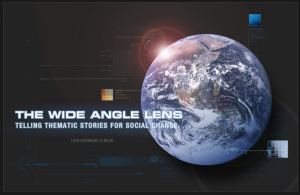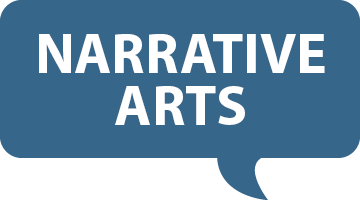How do we do research to support our storytelling?

Credit: FrameWorks Institute
Storytelling is hardwired into our brains, right? So why would anyone need to do research to support it? This line of thinking seems to suggest that what stories you tell and how people will respond to them is strictly a matter of intuition, maybe even biology. Not so. Research can complement whatever instinct you’ve developed, and help you answer the following questions:
Which audiences are worth my time?
Audience research can identify the people whose minds you can actually change, the people who are primed to take action on your behalf, and the decision-makers whose buy-in you’ll need to achieve your goals. If you’re aiming to change state law, are there particular legislators who are open to persuasion, and what voting bloc or media outlets do they care about? If you need to generate a large number of signatures, what are the demographics of people who are ideologically aligned but not currently involved in your work? Recommended research types: stakeholder and peer interviews; public-opinion-survey crosstabs.
How do key audiences feel about my issue?
Once you know who you want to reach, it’s time to use public-opinion research to figure out, as specifically as possible, where they stand on your issue. Are you persuading people who are on the fence, or are you mobilizing people who already agree? What matters to them? Data on public opinion can also be used to show decision-makers that there is existing support for a given cause and that speaking out is a political win. Recommended research types: surveys; focus groups; audience interviews.
Which messages will work?
Through framing and messaging research, you can learn how your target audiences will respond to specific arguments, which elements of the story to emphasize, where to begin, and which events to give a central role. Say you’re planning to float a story out to a target audience, but you’re not sure how it will be received. Conduct some research then revise to emphasize the elements to which they respond most strongly. Recommended research types: focus groups; online surveys, live tests.
What else is happening on our issue?
In its outstanding communications tool kit, Vision, Values and Voice, the Opportunity Agenda recommends doing research to discover who else is working on your issue and how your communications can best complement theirs—or counter it, if you’re looking into the opposition. It also helps you find out what stories have already been tried and how (un)successful they’ve been. Also track media coverage of your issue, which can be complemented by a thorough analysis of the dominant frames, arguments, story lines, and spokespeople. This research serves as an evaluation of your communications impact and can also uncover potential partners as well as sources and reporters likely to cover you in the future. Recommended research types: Google keyword tracking; media analysis.
What is our reach?
If a story hits the web and no one clicks, does it make an impact? Whether your coverage is in the papers, on TV, or online, understanding your reach is critical to allocating resources. Recommended research types: media planning; Google analytics; and similar online tools.
Communications research can be time-consuming, expensive, and, if it sits on the shelf, useless. Keep an eye out for pitfalls, though, and you’ll keep costs down and maximize the value of any research you do.
Don’t reinvent the wheel.
Start with secondary research to understand what other people have learned. The Opportunity Agenda has high-quality media and public-opinion research, as does the FrameWorks Institute (on framing), Political Research Associates (right-wing groups and ideologies), the Pew Research Center (public opinion), and MDRC. Even if you don’t learn everything you need to know, you’ll be able to narrow your research questions.
Be realistic.
Research takes place in a controlled setting, but social change takes place in a messy world where people are busy and have competing priorities. In its Discovering the Activation Point guide, Spitfire Strategies recommends trying a “live test”—that is, a trial run of different communications methods and messages to see which works best. You might test out different stories on YouTube and see which gets the most views; different subject lines in your fundraising emails and see which gets the biggest response; or different methods of reaching your target audiences.
Do participatory research.
Instead of making stakeholders the passive subjects of your research, invite them to become participants. In so-called “participatory research,” people get to define the research questions and help gather data and analyze it. This means you’re getting people more invested in your organization and its work for the long term. The micro-giving platform GlobalGiving has a Storytelling Project to gather what it calls “micro-narratives” to assess needs and strengths in the countries where it works.
Further exploration:
- Vision, Values and Voice, a communications tool kit by the Opportunity Agenda.
